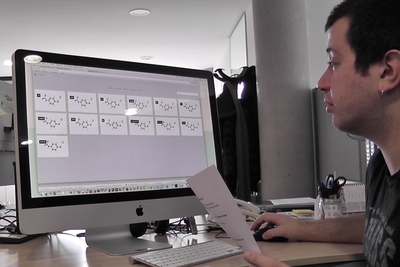
We understand quantitative information better by interacting with it: requesting, processing, and communicating information becomes an efficient tool for making decisions when it is done in an intuitive and convenient way, with a good user experience.
Summary
We study how people use digital or computational machines, systems or infrastructures to understand and work with information. Lowering the barriers that users might encounter through different interfaces is critical to improve the user experience and make that information useful. Today’s vast array of devices (computers, tablets, phones, VR headsets, audio) and pervasiveness of algorithms increase the complexity of our communication with computers elevating it to a multi-channel/multi-environment interaction.
Improving the way we work and communicate with algorithms and information is key to making better decisions.
In order to do this we pay special attention to the development process of applications and interfaces with a design focused on the end users, engaging them from the conceptualization stage and having a continuous feedback and an iterative process of continuous improvement.
We aim to make our products easier to use for general audiences as well as for specialised users in technical fields (urban, industrial, medical, environmental, etc.)
Objectives
- Create intuitive and easy to use data manipulation software
- Facilitate the analysis and communication of complex quantitative information through interaction and visual representation
- Develop graphical software interfaces focusing on usability, user needs, and feedback
- Research and develop new forms of interaction between humans and computers (virtual and augmented reality, voice interaction, and mediation through artificial intelligence actors)





